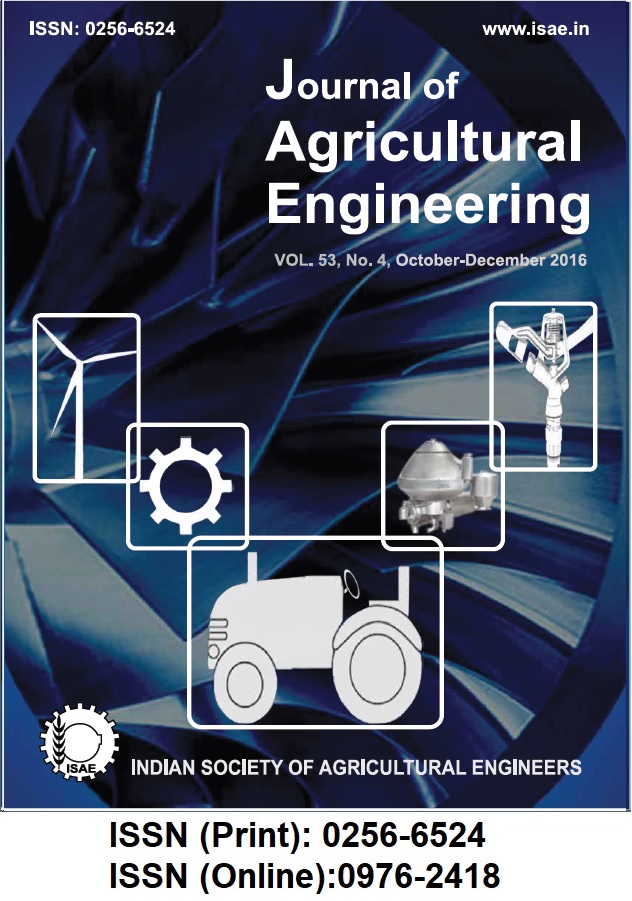Design, Development of a Milk Pasteurization System
DOI:
https://doi.org/10.52151/jae2016534.1612Keywords:
Holding coil, balance tank, flow monitoring system, FDV, PMS, regeneration efficiencyAbstract
Existing pasteurizers have problems like holding coil contamination during diversion, reinfection through back growth of microorganisms from return lines and syphonage of raw milk into pasteurized line due to vacuum creation during diversion. To overcome these problems, a new pasteurizer was designed as per the quality guidelines for effective and hygienic pasteurization of milk. The developed pasteurizer was tested at raw milk inlet temperature of 2, 4, 6 and 8 °C and total milk solids of 15 and 18 per cent. The pasteurization temperature of 78 to 80 °C was used for 20 s. The pasteurizer was tested for overall heat transfer coefficient, regeneration efficiency, total heat load and pressure drop. The logarithmic mean temperature difference was used to find the running time of the newly developed system. The pasteurized milk side was always at higher pressure than raw milk side. The product side was also at higher pressure than hot and chilled water side. The measures were found to be effective to avoid the cross contamination.
References
Anon. 1993. European Hygienic Equipment Design Group (EHEDG). Hygienic equipment design criteria. Trends Food Sci. Technol., 4, 225-229.
Anon.2 1993. European Hygienic Equipment Design Group (EHEDG). Welding stainless steel to meet hygienic requirements. Trends Food Sci. Technol., 4, 306-310.
Anon.3 1993. European Hygienic Equipment Design Group (EHEDG). Hygienic design of closed equipment for the processing of liquid food. Trends Food Sci. Technol., 4, 375-379.
Anon. 1994. European Hygienic Equipment Design Group (EHEDG). Hygienic design of valves for food processing. Trends Food Sci. Technol., 5, 169-171.
Anon. 2007. USFDA PMO Grade “A” Pasteurized Milk Ordinance. United State Department of Health and Human Services.
Anon. 2011. USFDA PMO Grade “A” Pasteurized Milk Ordinance. United State Department of Health and Human Services.
Bramley A J; McKinnon C H. 1990. The Microbiology of Raw Milk. In: Dairy Microbiology, Robinson, R.K. (Ed.), Elsevier Science Publishers, London, Vol. 1, 163-208.
Bylund Gösta. 1995. Dairy Process Handbook, Tetra Pak Processing System, AB S-221 86 Lund, Sweden, pp: 85.
Dalbhagat C G. 2011. Study and performance evaluation of a new plate heat exchanger of higher capacity. Unpublished M.Tech. Thesis, I.I.T, Kharagpur.
Kanade P; Subramani A. 2013. Hygienic design aspects of pasteurizer to prevent cross contamination of pasteurized milk. J. Hyg. Eng. Des., 2, 12-18.
Panse V S; Sukhatme P V. 1967. Statistical Methods for Agricultural Workers. ICAR, New Delhi, 70-72.
Starkie G L. 2007. Some aspects of energy conservation in dairy process plant. Int. J. Dairy Technol., 28 (3),121-128.
Youcef M; Abdelkader M; Lounes C. 2009. A dynamic model for milk fouling in a plate heat exchanger. Appl. Math. Modell., 33(2), 648-662.














